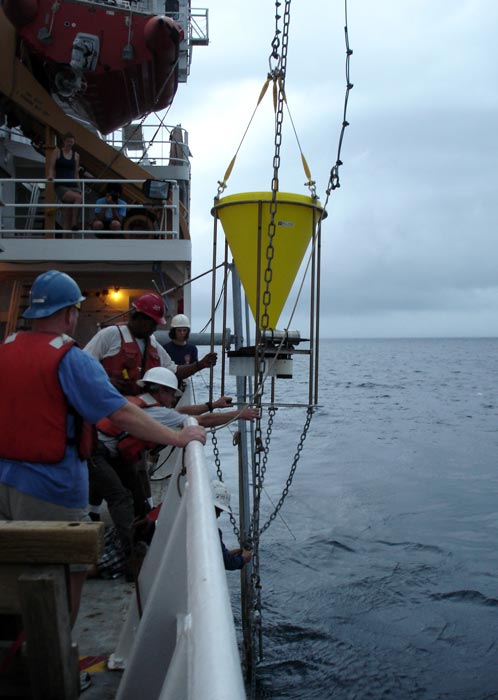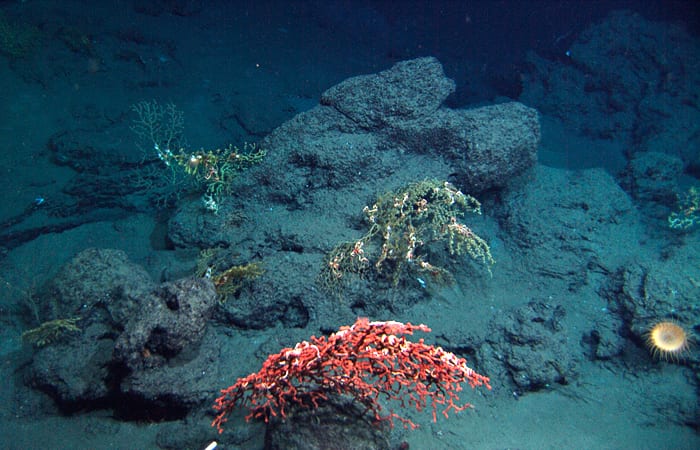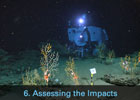Collecting Deep-sea Sediment Flux
Deepwater Horizon, 2010
Principle Investigator: Chris German
When researchers deployed two sediment traps deep in the Gulf of Mexico in 2009, they had little idea how important their data would become. The instruments were programmed to collect samples of the steady rain of organic and inorganic particles dropping to the seafloor that serve as food for many of the animals that live there.
Chris German placed the instruments near deep-water coral communities and programmed them to open a new collecting jar every two weeks from September 2009 until July 2, 2010, when they would finish collecting their last sample and await retrieval. When the oil spill began, however, German and his colleague Tim Shank quickly realized that the instruments were placed in locations that might provide an unprecedented look at how oil on the surface affects the rain of particles that many deep-sea animals rely on for food. One instrument was located under a part of the Gulf that largely escaped being covered by oil, while the other was overlain by slicks almost from the time the spill began.
For that reason, it became imperative that their data series be extended as long as oil might be affecting conditions in the Gulf. German applied for funding from NSF under the Rapid Response program and just days before the original instruments were set to switch off, was able to deploy two additional sediment traps in the same locations.
One of the replacements would eventually be found to have malfunctioned, but the trap under the oiled waters operated faultlessly and the researchers are taking their first glimpse at whether oil can affect fragile ecosystems more than fifteen hundred feet (~500m) down, beneath the visible surface slick. Additional instruments deployed and retrieved throughout 2010 and 2011 will ensure that researchers will have an uninterrupted look at conditions on the bottom of the Gulf for two full years.
From Oceanus Magazine
May 5, 2011
Life and Death in the Deep Sea
A team of scientists that had been studying deep-sea coral communities on the Gulf of Mexico seafloor before the oil spill was in perfect position to assess impacts afterwards.
Source: Oceanus Magazine
Related Multimedia
Science in a Time of Crisis, Chapter 6: Assessing the Impacts
WHOI's Response to the Deepwater Horizon Oil Spill
Related Expeditions
Dive and Discover Expedition to the Gulf of Mexico
December 6 – 14, 2010
Lophelia II 2010: Oil Seeps and Deep Reefs
October 14 – November 4, 2010
Related Technology
Sediment Trap
Sediment traps are containers that scientists place on the seafloor or in the water column to collect particles falling down from above.
ROV Jason
A remotely operated vehicle (ROV) that operates while tethered to a support ship and has been used to survey the seafloor in the Gulf.






